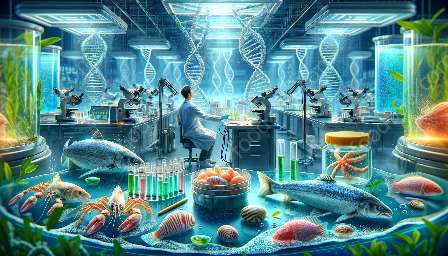Introduction
The genetic improvement of seafood species, also known as seafood biotechnology, is a fascinating area that is revolutionizing seafood science. With the increasing demand for seafood and the sustainability challenges facing the fishing industry, genetic improvement offers promising solutions for enhancing the productivity, nutritional quality, and resilience of seafood species.
Understanding Seafood Biotechnology
Seafood biotechnology involves the application of genetic tools and techniques to enhance the desirable traits of seafood species. This can encompass selective breeding, molecular genetics, and genetic engineering to achieve specific improvements in traits such as growth rate, disease resistance, and nutritional content. By harnessing the power of genetics, researchers and aquaculture practitioners are able to accelerate the development of improved seafood varieties that are better suited to meet the demands of consumers and the challenges of sustainable seafood production.
Key Benefits of Genetic Improvement
Enhanced Productivity: Genetic improvement allows for the selection and propagation of seafood species with higher growth rates, leading to increased productivity and more efficient aquaculture operations.
Disease Resistance: Through genetic manipulation, researchers can develop seafood species that exhibit enhanced resistance to common diseases, reducing the need for antibiotics and chemical treatments.
Nutritional Quality: By targeting specific genes associated with nutritional content, such as omega-3 fatty acids, seafood biotechnology can lead to the development of seafood species with improved nutritional profiles, benefiting consumer health.
Environmental Resilience: Genetic improvement enables the creation of seafood varieties that are better adapted to changing environmental conditions, helping to mitigate the impact of climate change and habitat degradation.
Applications of Seafood Biotechnology
Seafood biotechnology has diverse applications across the seafood industry, including:
- Selective Breeding Programs: Employing genetic selection to produce improved strains of popular seafood species, such as salmon, shrimp, and tilapia.
- Molecular Markers: Utilizing DNA markers to identify and select for desirable traits, accelerating the breeding process and ensuring genetic diversity.
- Transgenic Approaches: Introducing specific genes into seafood species to confer desired traits, such as faster growth or disease resistance.
Challenges and Considerations
While seafood biotechnology offers tremendous potential, it also presents challenges and ethical considerations. These include concerns about the impact of genetically modified organisms (GMOs) on wild populations, ensuring the safety of transgenic seafood products for human consumption, and addressing regulatory frameworks for genetic improvement in aquaculture.
Overall, the genetic improvement of seafood species through biotechnology is a dynamic field with significant implications for seafood science and sustainable seafood production. Through ongoing research and responsible application, genetic improvement has the potential to play a key role in meeting the growing demand for seafood while safeguarding the health of aquatic ecosystems.

